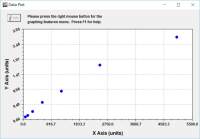Electrophysiological studies provide essential clues about the regulation and physiological function of ion channel proteins. Probing ion channel activity in vivo, though, often is challenging. This can limit the usefulness of such model organisms as Drosophila for electrophysiological studies. This is unfortunate because these genetically tractable organisms represent powerful research tools that facilitate elaboration of complex questions of physiology. Here, we describe a recently developed method for recording ion channel activity in Drosophila sensory neurons. This approach is based on patch-clamping primary neuron cultures from Drosophila embryos. Such cultures allow the study of ion channels in different genetic backgrounds. In addition to describing how to prepare a primary neuronal cell culture from Drosophila embryos, we discuss, as an example of utility, analysis of Na+ currents in cultured class IV multidendritic (md) sensory neurons with the patch clamp technique. Excitability of md sensory neurons, manifested as action potential firing, is revealed with whole-cell current-clamping. Voltage-clamping class IV md neurons revealed the activity of the voltage-gated Na+ channel, paralytic . Moreover, challenging class IV md neurons with acidic pH activates acid-sensing inward Na+ currents. Genetic manipulation of Drosophila combined with this electrophysiological readout of activity identifies pickpocket1 (Ppk1), a member of the Deg/ENaC channel family, as responsible for conducting an acid-sensing Na+ current in class IV md sensory neurons.






